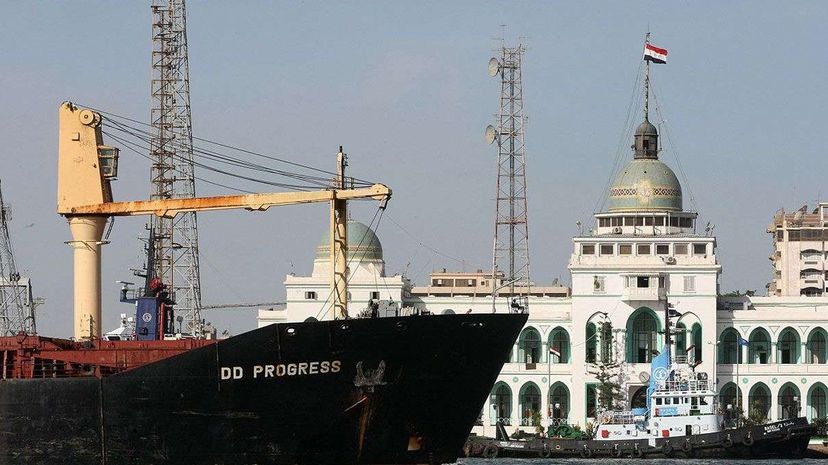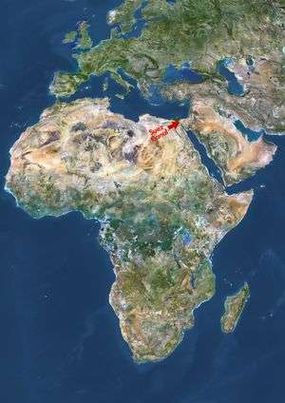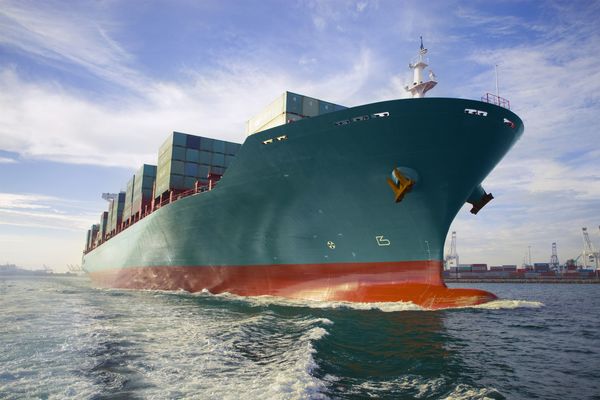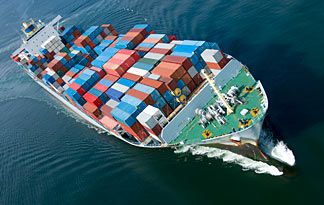
With oil prices at or near multiyear lows, American consumers are flocking back to gas guzzlers, with electric cars taking a beating. Oil-rich combatants in the Middle East — both the terror group ISIS and those fighting them — are trying to deal with a squeeze to their main source of income.
Now comes word of an industry that's tackling cheap oil prices by literally going out of its way.
Advertisement
Some cargo ships, mainly those laden with supplies of crude oil, are bypassing the high tariffs of Egypt's Suez Canal, to chug along a much-longer route around the very bottom of Africa to reach their destinations. A report by SeaIntel, a group that examines maritime trade, found that 115 ships took that route late last year in an effort to save money.
The move can add thousands of miles and weeks to a typical journey. According to the website sea-distances.org, a trip from Mumbai, India, to London would cover some 6,279 nautical miles (11,629 kilometers) and take 26 days to complete going through the Suez Canal.
Sailing around Africa, however, the journey would stretch to 10,702 nautical miles (19,820 kilometers) — that's 4,423 additional nautical miles — and 44 days around Africa.
Until the Suez Canal opened in 1869, traveling around the African continent was the only way to go to Europe or the Americas from Asia. But that feat of modern engineering — connecting the Mediterranean Sea to the Red Sea, 10 years in the making — changed everything, ushering in a new era of maritime shipping.

Now, though, math trumps all, for some.
Why Take the Long Route
"I've seen some articles that say this will take shipping back to the 18th century. That's a lot of nonsense," says Jean-Paul Rodrigue, a professor at New York's Hofstra University whose research includes the study of maritime transport systems and logistics. "This is a purely contextual and practical decision. It's reflecting current market conditions. On one side you have an overcapacity of maritime shipping; there's a fair amount of ships looking for cargo going around. And at the same time, the demand for global goods, especially oil, has plummeted, along with the prices.
"In this current context, you're not in a rush. So you're going to do whatever you can to cut some costs," Rodrigue adds. "And skipping the Suez Canal gives you the opportunity to do something like that."
The report from SeaIntel says that a typical oil tanker has to pay $465,000 to get through the Suez Canal (based on the volume of cargo). By going the long way around, shippers can save up to $235,000 a trip, even with the added price of fuel to get there and paying the crew for the couple of extra weeks of work.
Rodrigue says there are other advantages, too. With oil prices so low, some ships are not only taking the longer route, they're being instructed to slow down on their way.
"The cargo is in transit for a longer period of time, so that the cargo could actually change hands several times, because of all the stake issues in the markets — looking for a better buyer," he says.
A Blow for Egypt?
It's a game that has some very real financial ramifications. Some shippers could save, according to the SeaIntel report, as much as $19 million a year by bypassing the Suez Canal. That number, though, comes at the expense of Egypt.
The Suez Canal contributes more than $5 billion a year to the Egyptian economy, according to Forbes. And the government hopes an $8 billion expansion completed last year will swell the canal's worth to some $13.2 billion by 2023.
In a country already routed by political instability that has devastated the tourism industry, revenue from the Suez is more important now than ever.
SeaIntel suggests that the Suez Canal would need to cut its prices by somewhere around 50 percent to entice ships to again take the shorter route. But whacking fares doesn't seem like much of an alternative, Rodrigue says.
"There is pressure — they don't enjoy losing that revenue. It's not pocket change, that's for sure," says Rodrigue, who co-authored "The Geography of Transport Systems". "I don't think it's going to happen. You have so much in investment. They are designed tolls. They do a lot of micro-economy calculations, supply and demand, and they've been doing that for decades. So they know very well how the market behaves."
Meanwhile, the Suez Canal Authority chief has pointed out that 115 vessels is a mere drop in the bucket, considering more than 17,000 vessels passed through the canal in 2015. And canal traffic in February 2016 was 6.6 percent higher than February 2015, the latest available figures. As oil prices inevitably climb, heading through the Suez again could make sense for tankers.
For now, though, ships burdened with cheap oil may continue to take a detour around the Cape of Good Hope, trying to prove that the shortest distance between two points isn't always the best way to go.
Advertisement

